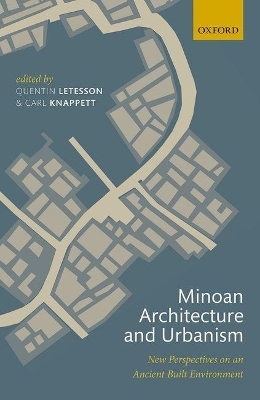
Minoan Architecture and Urbanism
Oxford University Press (Verlag)
978-0-19-879362-5 (ISBN)
Minoan Crete is rightly famous for its idiosyncratic architecture, as well as its palaces and towns such as Knossos, Malia, Gournia, and Palaikastro. Indeed, these are often described as the first urban settlements of Bronze Age Europe. However, we still know relatively little about the dynamics of these early urban centres. How did they work? What role did the palaces have in their towns, and the towns in their landscapes?
It might seem that with such richly documented architectural remains these questions would have been answered long ago. Yet, analysis has mostly found itself confined to building materials and techniques, basic formal descriptions, and functional evaluations. Critical evaluation of these data as constituting a dynamic built environment has thus been slow in coming.
This volume aims to provide a first step in this direction. It brings together international scholars whose research focuses on Minoan architecture and urbanism as well as on theory and methods in spatial analyses. By combining methodological contributions with detailed case studies across the different scales of buildings, settlements and regions, the volume proposes a new analytical and interpretive framework for addressing the complex dynamics of the Minoan built environment.
Quentin Letesson is Marie Sklodowska-Curie postdoctoral fellow at the Department of Art, University of Toronto and the Département d'histoire de l'art et d'archéologie, Université catholique de Louvain. His work focuses on configurational analyses of the Minoan built environment, on the urbanisation of Crete, and on the emergence of technical innovations in the production of Minoan material culture. He teaches archaeological theory and ethnoarchaeology at the Université catholique de Louvain. He is involved in several excavations on Crete, most notably at Palaikastro and Sissi. Carl Knappett teaches in the Department of Art at the University of Toronto, where he holds the Walter Graham/ Homer Thompson Chair in Aegean Prehistory. He is an archaeologist interested in how things generate meaning through their creation and use. While the things of the Aegean Bronze Age are his main focus, particularly the pottery of Minoan Crete, he attempts to integrate insights from the study of things in ethnographic, ethnoarchaeological and sociological contexts with a view to developing a broad-based approach to materiality in society. His publications include Thinking Through Material Culture (Penn Press), An Archaeology of Interaction, and Network Analysis in Archaeology (both with Oxford University Press). He conducts fieldwork at various Bronze Age sites across the Aegean, and directs the new excavations at the Minoan town of Palaikastro in east Crete.
PART I; PART II; PART III
| Erscheinungsdatum | 24.07.2017 |
|---|---|
| Verlagsort | Oxford |
| Sprache | englisch |
| Maße | 175 x 240 mm |
| Gewicht | 852 g |
| Themenwelt | Geisteswissenschaften ► Archäologie |
| Geschichte ► Allgemeine Geschichte ► Vor- und Frühgeschichte | |
| Geschichte ► Allgemeine Geschichte ► Altertum / Antike | |
| Geisteswissenschaften ► Geschichte ► Regional- / Ländergeschichte | |
| Technik ► Architektur | |
| ISBN-10 | 0-19-879362-6 / 0198793626 |
| ISBN-13 | 978-0-19-879362-5 / 9780198793625 |
| Zustand | Neuware |
| Haben Sie eine Frage zum Produkt? |
aus dem Bereich


